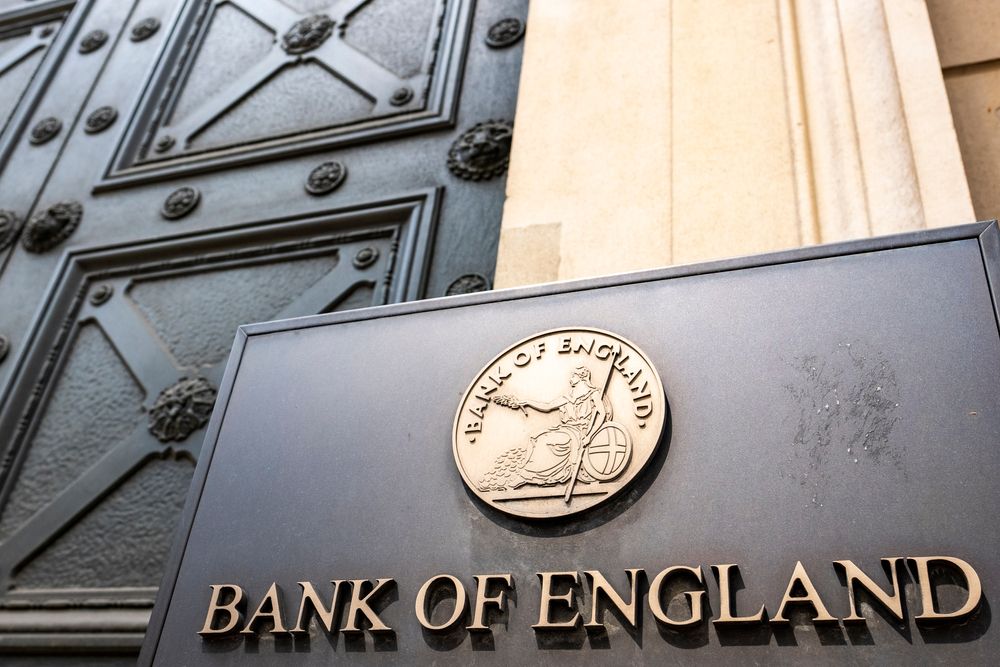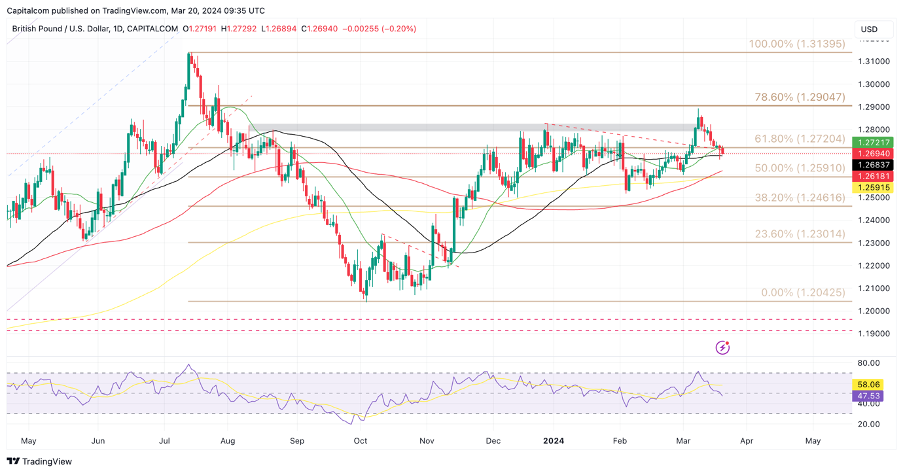Bank of England preview: softer inflation but no hope for rate cuts just yet
No changes expected from the BoE meeting in March, but the vote split could give more information on future policy
Both headline and core inflation rose less than expected in the UK in February. The data released on Tuesday morning shows consumer prices resuming the disinflation process after two months of higher readings. Year-on-year headline growth is the lowest in over two years.
However, the weaker CPI reading is unlikely to skew the Bank of England’s (BoE) immediate stance on policy rates. As per data from Reuters, markets are pricing in a 95% chance of no change at the meeting on Thursday. The reality is that inflation is still too high and the return to the 2% long-term target is proving to be a long and tricky process, meaning the BoE has little room to act. The fact that output prices from producers continue to rise despite dropping input prices highlights the possibility of further deviations from the declining trend in CPI. This is likely to keep BoE policymakers skewed towards keeping rates unchanged for the foreseeable future until significant progress has been made to reduce domestic price pressures.
Vote split in focus
The meeting vote split usually attracts some attention as it gives an insight into how the nine voting members are positioned individually. In February, there was a three-way vote split – two to hike, six to hold, one to cut – which was a little surprising, as analysts were not expecting any members to vote on a rate cut, which gave a dovish tone to the meeting. The last time an MPC member voted to cut rates was in January 2020.
The expectation for the meeting on Thursday is for an 8-1 vote split. The two most hawkish members who voted to hike in February (Haskel and Mann) are expected to tone down their approach and move to the unchanged category. Dhingra, the dovish dissenter, is expected to vote for a rate cut once again. In all honesty, she probably knows that it is highly unlikely that another four members will vote to cut, so this doesn’t necessarily mean that she would like to see an immediate rate cut, but she is paving the way for softer policy in the near term. A deviation from the expected vote split could cause some volatility in markets, as it could shift expectations about future policy. As of now, there are 70 basis points of cuts priced in for 2024, meaning markets are leaning towards three 25bps cuts in the second half of the year.
Recent comments from MPC members
Governor Bailey noted that "we don't need inflation to come back to target before we cut interest rates", whilst Chief Economist Pill said that his baseline scenario for the timeline of rate cuts remains some way off. Dovish dissenter Dhingra believes that price developments strongly signal that inflation is already on a path of sustainably meeting the target over the medium term, whilst hawkish member Mann has remarked that the BoE has a long way to go for inflation pressures to be consistent with the 2% target.
GBP/USD latest
GBP/USD has been stuck in a bearish channel for the past 10 days as the US dollar recovers some momentum. The pair has dropped back below 1.27 as traders buy into the dollar ahead of the Federal Reserve meeting on Wednesday evening. The stronger inflation readings in the US have pushed back on expectations of rate cuts given the resilience of the US economy and consumers. This has been favouring the dollar carry trade and pushing yields higher.
There could be some repricing after the meeting if the commentary from Powell has a slightly dovish tilt to it even as the economic data remains strong. The dollar side will likely continue dominating the momentum in GBP/USD. For GBP, there could be some bullish momentum on Thursday if we see any hawkish dissenters in the vote split, as well as Bailey reiterating that policy will need to remain restrictive.
We know from previous meetings that Governor Bailey doesn’t like to give much away in terms of future guidance, so UK assets could likely see the majority of the momentum after the decision is announced.
GBP/USD daily chart
 Past performance is not a reliable indicator of future results.
Past performance is not a reliable indicator of future results.